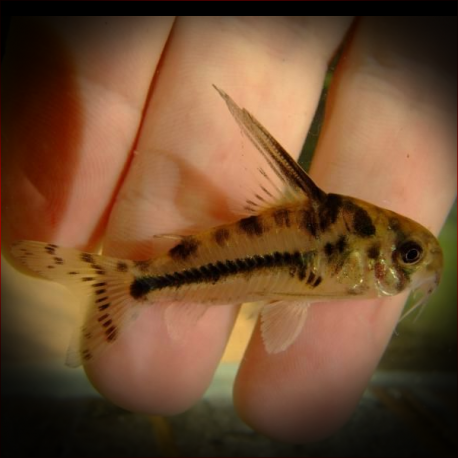More info
Datasheet
| Maximum Size | 4.5cm / 1.77inches |
| Temperature | 21°C / 69.80°F - 28°C / 82.40°F |
| Hardness | 1.01dgH / 18ppm - 10.03dgH / 179ppm |
| pH | 5.5-7.5 |
General Description
The Boeseman's Catfish, scientifically known as Corydoras Boesemani, is a species that is uncommon in the aquarium trade but belongs to the expansive Callichthyidae family. These catfish are part of the armored catfish group due to the presence of bony plates instead of scales on their bodies. With over 150 valid species in the Corydoras genus, they are considered among the largest catfish groups. Boeseman's Catfish are facultative air breathers, possessing a modified intestine that aids them in taking in atmospheric oxygen, especially in oxygen-deprived environments.
Aquarium Setup
For optimal care, it is recommended to keep Boeseman's Catfish in groups of at least 4-6 individuals. The ideal tank setup includes a substrate of fine sand or clean rounded gravel, along with additional decor for the fish's security. The water parameters should range from a hardness of 18-179 ppm, a pH of 5.5-7.5, and a temperature between 21-28°C (see table).
Behaviour
Boeseman's Catfish are known to be peaceful and gregarious fish, thriving when kept in a group setting. They exhibit social behaviors, and maintaining them in a group enhances their well-being.
Feeding and Diet
As foragers, these catfish are omnivores and readily consume most sinking dried foods, live, and frozen varieties such as bloodworms and Tubifex. Offering a varied diet ensures their optimal health, and they should not rely solely on leftovers or algae in the aquarium.
Reproduction & Dimorphism
Sexually mature Boeseman's Catfish can be encouraged to spawn through cool water changes, with a preference for depositing eggs on submerged leaf litter. Females typically grow larger and have a rounder, higher-bodied appearance compared to males, showcasing sexual dimorphism.
Habitat and Distribution
Endemic to the upper Suriname River system in Suriname, Boeseman's Catfish thrives in clear, soft, acidic waters with sandy or muddy substrates. They are commonly found in the tributary creeks with ample leaf litter and overhanging vegetation as part of their habitat.

